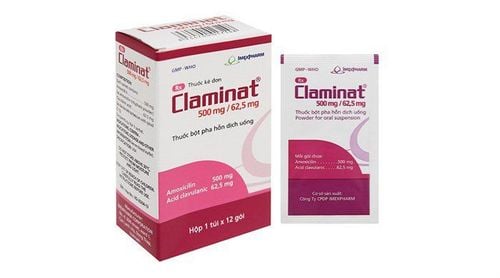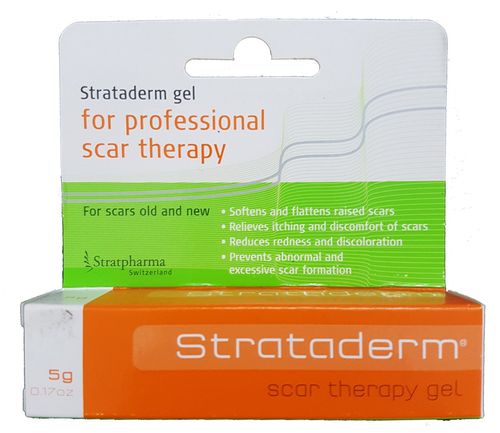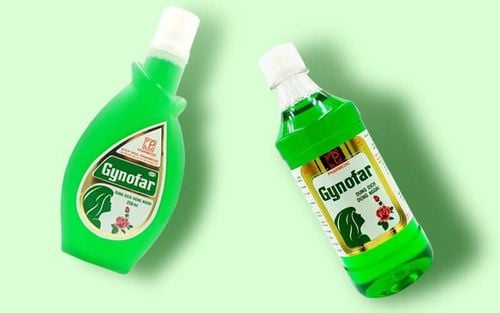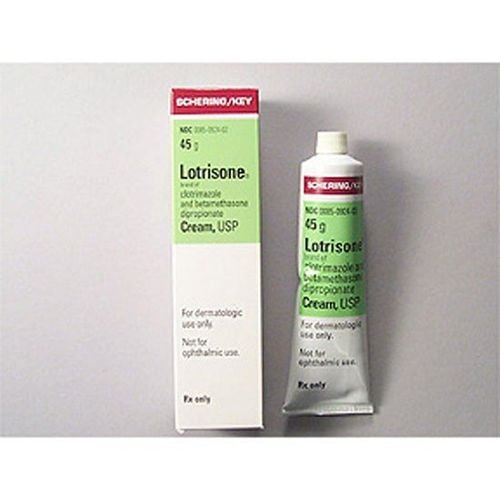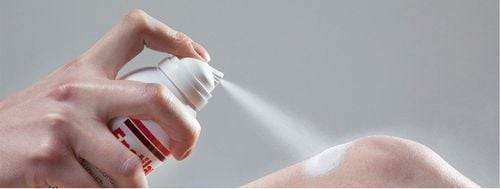This is an automatically translated article.
Bacterocin Onit belongs to the group of drugs for the treatment of dermatological diseases, commonly used for local infections, especially in the skin. The necessary information about the uses, dosage, and usage of Bacterocin Oint will help patients use the drug effectively, and at the same time prevent the side effects that the drug brings.
1. What is Bacterocin Oint?
Bacterocin Oint is produced in the form of a topical ointment of 5g or 15g, including the following ingredients:
Mupirocin 20mg; Excipients: Polyethylene glycol 400, Polyethylene glycol 400, Disodium edetate hydrate, purified water. Just enough for 1 tube of 5g or 15g. In which:
Mupirocin is an antibiotic formed by the fermentation of Pseudomonas fluorescens. Mupirocin's mechanism of action is somewhat different from that of currently available antibiotics. Through the reversible binding of isoleucyl tRNA synthetase, an enzyme that catalyzes the formation of isoleucyl-tRNA from tRNA and isoleucin, Mupirocin inhibits bacterial protein synthesis.
The antibacterial spectrum of Mupirocin is quite narrow, mainly sensitive to aerobic Gram-positive bacteria, such as Staphylococcus strains: Staphylococcus aureus (both methicillin-resistant or multi-resistant strains), Staphylococcus saprophyticus, Staphylococcus epidermidis.
Gram-negative bacteria are less susceptible to the drug. However, the drug is still sensitive to some bacteria such as Haemophilus influenzae, Neisseria meningitidis, Neisseria gonorrhoeae, Branhamella catarrhalis, Pasteurella multocida, Bordetella pertussis.
2. Uses of Bacterocin Oint
Bacterocin Oint is used in the following cases:
Adults or children with bacterial skin infections. People with folliculitis, impetigo, pustules caused by bacteria of the Staphylococcus strain. Infectious lesions of the skin after burns or trauma.
3. Contraindications to the use of Bacterocin Oint
Hypersensitivity to any component of Bacterocin Oint. History of hypersensitivity to Mupirocin or to the excipients contained in Bacterocin Oint. Large open wound or burn wound, deep and serious infection. Use on sensitive areas such as around the eyes and mouth. Pregnant women or women who are breastfeeding.
4. Usage and dosage of Bacterocin Oint
Adults or children ≥ 1 year old:
Treatment dose for skin infections: Apply a small amount just enough to the affected skin surface, 2-3 times a day, usually for 10 days continuously. Treatment dose for impetigo: Apply the drug 3 times a day x 14 days continuously. Children ≤ 1 year old:
Should not be used for this person because there is no evidence of the effectiveness and harm when using Bacterocin Oint. Before applying Bacterocin Oint, it is necessary to wash with clean water and dry. Use clean gauze to bandage the wound site after using the drug, not too tight.
If the treatment results are not satisfactory after about 3 to 5 days of applying Bacterocin Oint, it is necessary to re-examine at a medical facility specialized in dermatology to change the appropriate drug.
Carefully read the treatment instructions on the packaging of Bacterocin Oint before use. Do not arbitrarily change the dose and use method without the consent of a dermatologist, in order to avoid unwanted side effects.
5. Notes when using Bacterocin Oint
Undesirable effects:
Overdosing Bacterocin Oint or using it on the skin for a long time, especially in sensitive skin areas can cause unwanted side effects such as:
Common : Burning in the skin, dry skin, stretch marks at the injection site. Uncommon: Itching, stinging, erythema, burning, edema, contact dermatitis, cellulitis at the site of application. Rare: Systemic manifestations such as rash, rash, angioedema, dizziness, immune disorders. The drug should be discontinued when the patient shows signs of hypersensitivity or severe local irritation after taking the drug. In case of experiencing the above symptoms, you should notify your doctor or go to the hospital immediately for timely treatment.
Note on drug use in subjects:
Currently, studies show that topical Bacterocin Oint is often less dangerous when treating on different age groups. Even use in the elderly showed results and safety almost similar to normal adults. Pregnant and lactating women: Currently, there are no cases of harm to the fetus or affecting milk during the use of the drug. However, Bacterocin Oint should only be used when the potential benefit outweighs the potential harm. In women who apply Bacterocin Oint to treat bacterial infections of the skin near the breast, it is important to clean before breastfeeding. Bacterocin Oint can be well absorbed through the skin from where it is excreted by the kidneys. The use of Bacterocin Oint in open or deep wounds may increase the absorption of large amounts of the drug into the bloodstream, which is especially dangerous for patients with severe renal impairment.
6. Bacterocin Oint drug interactions
Bacterocin Oint should not be used with other topical drugs because it reduces the ability to penetrate the mucosa, thereby reducing the effectiveness and stability of the drug.
7. Preservation of Bacterocin Oint
Bacterocin Oint medicine is stored in a dry place, the temperature is below 30 degrees Celsius, avoiding direct exposure to high temperature or sunlight. Keep Bacterocin Oint out of the reach of children. Finally, carefully read the instructions for use on the package before use to understand the basic information on how to use and the notes of Bacterocin Oint. In addition, it is necessary to consult a dermatologist to help bring the best treatment results.
Please dial HOTLINE for more information or register for an appointment HERE. Download MyVinmec app to make appointments faster and to manage your bookings easily.




